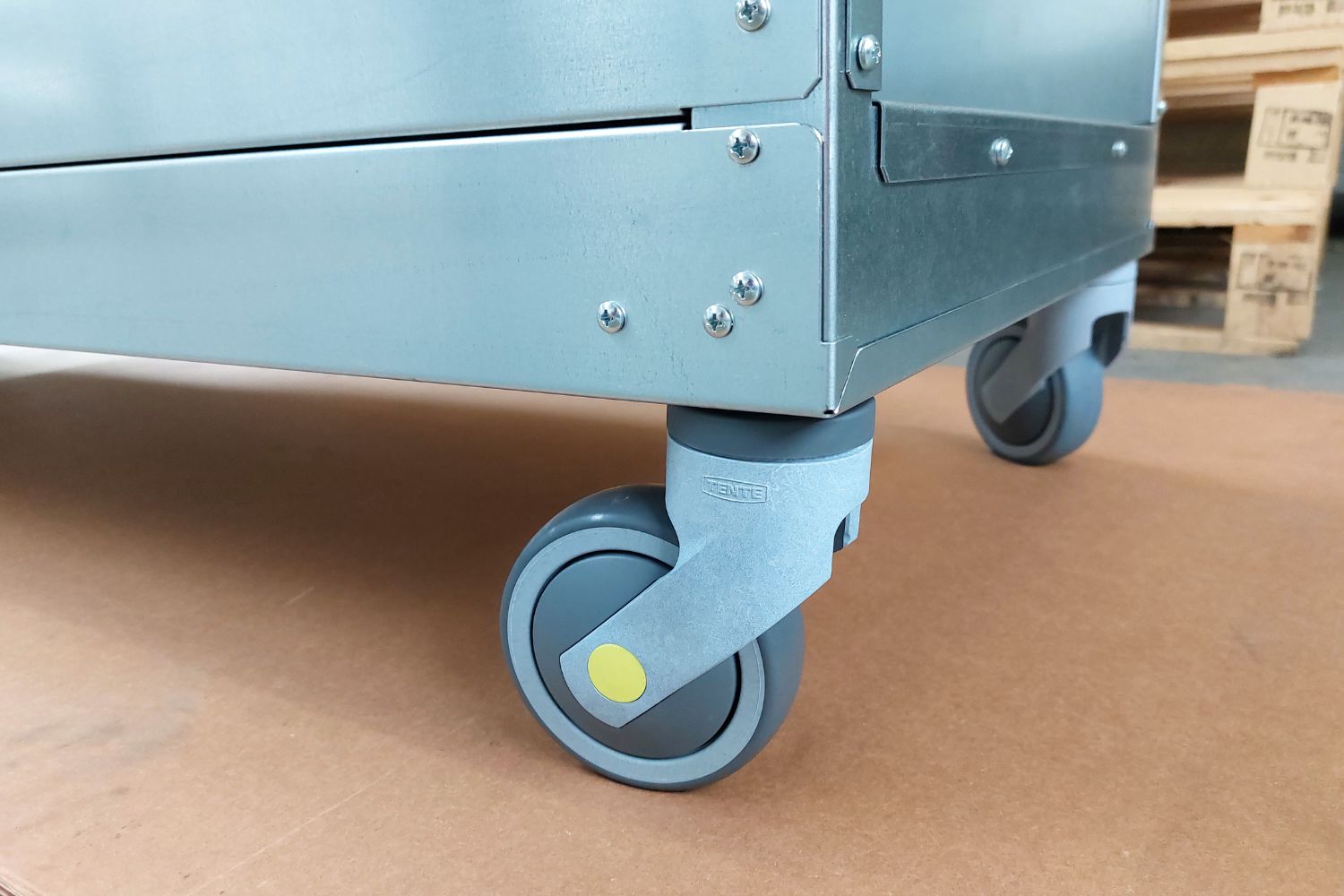Electrostatic current is a major problem that occurs when insulating materials are stressed even by simple rubbing between them, which causes an accumulation of electrostatic charges with the consequent release of electric shock.

This is quite common in leather goods factories.
The hides, placed on the leather horse trolley, are handled in the cutting department. When the hides are unloaded, the trolley is electrostatically charged, and the operator often gets a shock.
What damage is caused by electrostatic current?
Electrostatic current can cause a variety of health damages, which vary depending on the intensity and duration of exposure. Some of the most common damages caused by electrostatic current include:
- Electric shocks: Exposure to electrostatic discharge can cause electric shocks, which can vary in intensity depending on the amount of electrostatic charge accumulated and environmental conditions. Electric shocks can cause pain, skin lesions and, in severe cases, can lead to heart problems or other medical complications.
- Cardiovascular disorders: Electric shocks caused by electrostatic current can affect the cardiovascular system, causing alterations in heart rhythm and increasing the risk of heart problems, especially in people with pre-existing heart conditions.
- Neurological Disorders: Prolonged exposure to electrostatic discharges can affect the nervous system, causing symptoms such as dizziness, headaches, irritability, and difficulty concentrating.
- Psychological Stress: The constant presence of electrostatic discharges in the work environment can cause psychological stress in employees, increasing anxiety and reducing general well-being.
- Physical Injuries: Electric shocks can also cause direct physical injuries, such as falls or injuries from contact with nearby objects or machinery.
It is essential to take preventive and precautionary measures to minimise the risk of damage to health from exposure to electrostatic current in the workplace.
Workplace safety regulations may vary from country to country and may be subject to change over time. However, there are general guidelines and standards that are often adopted to ensure safety in the workplace. Some of the main principles and regulations include laws, regulations, technical standards, international standards (such as ISO), training, awareness, and responsibility of the employee.
Our solution applied to leather horse trolleys
Following several reports from our customers, we modified our leather horse trolleys by developing the antistatic system.

At the bottom of the trolley, we have inserted an antistatic wheel that immediately discharges the electrostatic charge to the ground due to the presence of ferrous elements inside. In this way, the operator will no longer get a shock when using the trolley.
The leather horse is already supplied with this system, at no extra charge.
This solution is applied to every leather horse trolley model. Discover all the available models and the characteristics.

Dealing with the problems associated with electrostatic current in the workplace requires a combination of awareness, appropriate technologies and procedures. Investing in the prevention and management of such risks not only improves the safety and health of employees, but also helps preserve the integrity of production processes and the quality of work done.
In specific sectors such as leather goods, it is important to pay special attention to electrostatic current management practices when using leather horse cart to minimise the risk of damage caused by electrostatic current.
